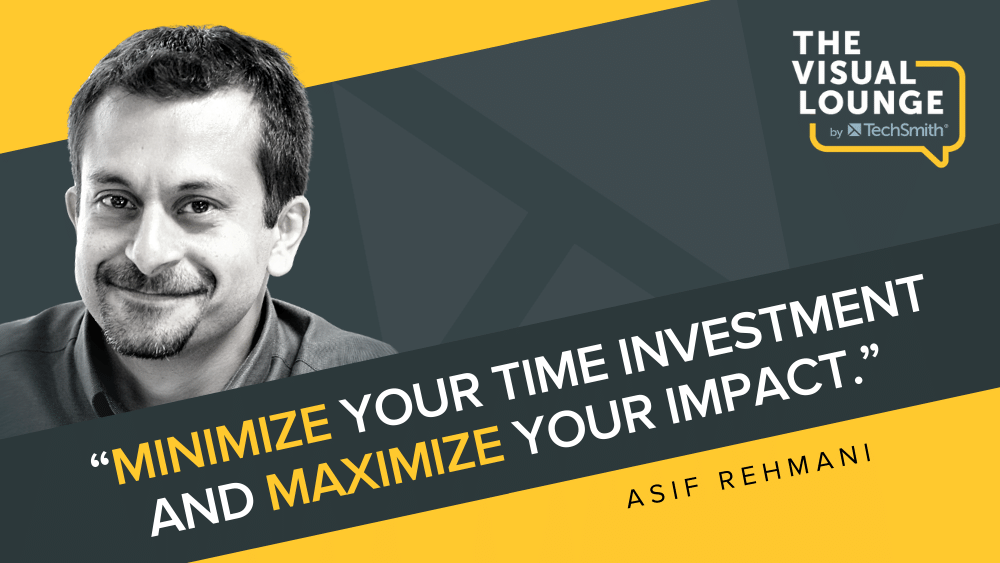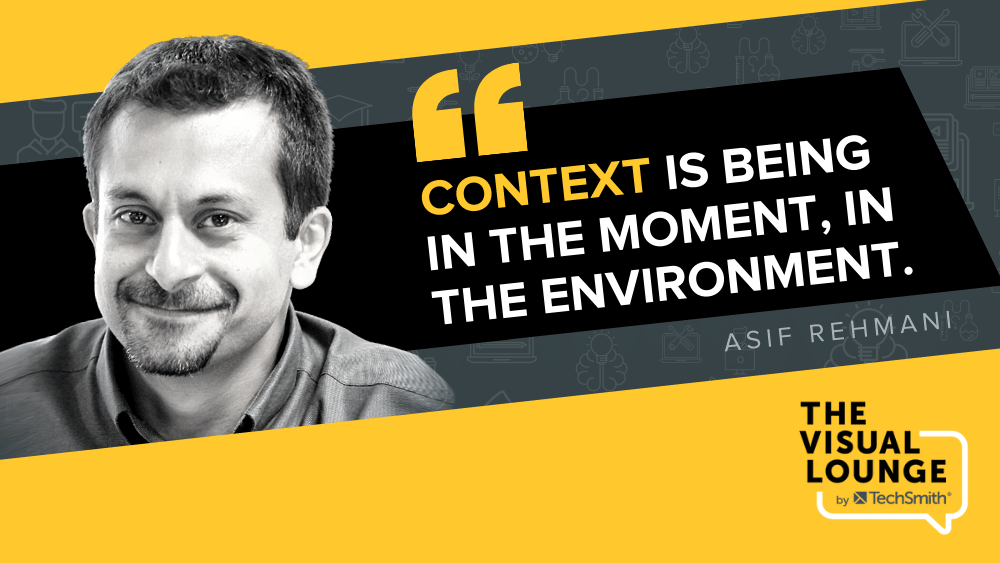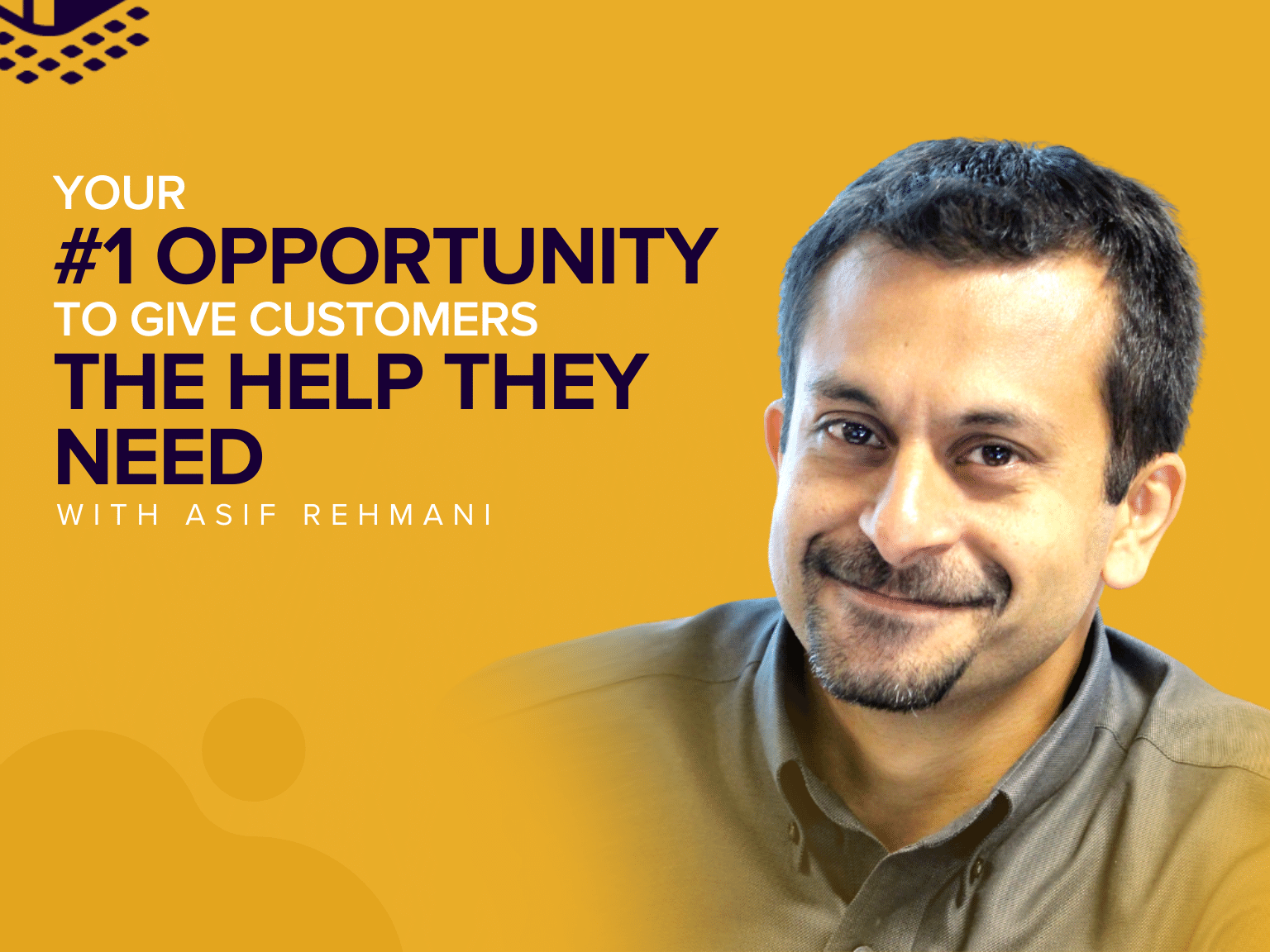When your customers, learners, or users run into issues, finding the help they need to move forward can waste precious time. In fact, this lost time can also have a wider effect throughout your business.
So, how can you help your customers get the guidance they need?
Context and microlearning strategies are just some of the ways you can support your users and help them find success. Asif Rehmani, Founder and CEO at VisualSP, joins us in this episode to share what these are and how you can integrate them into your business.
Asif supports users in the context of their own environment. So, he built VisualSP’s interactive guidance system. Today, this system is used by over 2 million users worldwide to help them get their jobs done.
You can watch the video on this topic at the top of this post. To listen to the podcast episode, hit play below, or read on for more…
Why context matters
Taking your audience’s or customer’s context into consideration makes a real difference when helping them. For Asif, context is anything you experience at that moment. Your environment motivates you to behave or feel a certain way, and Asif suggests that you should bring this understanding to learning.
Asif calls his approach “contextual help.” His content helps users while they’re facing their challenges. Instead of teaching skills and concepts that users need ahead of time, Asif guides users through processes as they perform the actions. This way, users are “in the moment” and have all the context they need to put the help content into practice and achieve their desired result.
“When you dive deep into something, and you’re learning about a specific concept, will you remember that concept when you actually need it? Will you remember the specifics of what you need to do, when you need it? Or when you’re in context of doing the actual work?”
How to avoid “context switching”
Contextual help also reduces the amount of time lost by “context switching.” This is when users want to perform an action but first need to find out how to do it. Asif notes that studies show how much time gets lost through context switching and how much it ultimately costs businesses.
For example, if you want to submit a leave of absence but are unfamiliar with the process or software, you may have to look for information to help. You might have to check your intranet, digital workspace, find instructions within the software itself or even use a search engine to find the help you need. This takes time away from your tasks and disrupts any deep work or deep learning.
“It takes you time to get into that zone and into context. When you get out of context, if I remember correctly, it takes 20 minutes altogether to get out of context and get back into context.”
Help should be readily accessible the moment you need it. Reducing the need for context switching keeps users focused on what they’re doing while giving them the guidance they need to quickly and effectively complete their tasks. Asif believes that you can achieve this by making help available within the interface. This could be making help icons or visual tips obvious, or, if you’re using a physical document, attaching any supporting material that users may need.

How to understand what help your users need
Before you can truly help your users, you must understand what help they need. Perhaps there are certain problem areas that need addressing or ways to make processes clearer so users can follow along easily. Asif shared his three-step process for how to approach creating help content for your users.
- Locate the pain points – where do your user need help? Where are they repeatedly needing to context switch to get the information they need?
- Decide how much information they need – do you need to provide a long-form or in-depth piece of content to help users, or will some micro-content do the job? Both have their place, so you need to decide which style suits the user’s need.
- Choose how to implement the help content – for example, you could create a printout that users can keep on their desks, insert information directly into the app, or overlay help content on top of the application so that users have access to it when they need it.
The difference between micro and macro learning
Asif prefers to empower users with microlearning overlays. He suggests that these are the best solution for most users, as it works entirely within the user’s context.
Microlearning content is great for when users need fast, effective help. An example would be using a YouTube video to teach you how to do something in less than 10 minutes or step-by-step visual teaching you how to use a new piece of equipment. Microlearning is quick to consume, and the information is easy to put into practice.
Macro-learning, on the other hand, is something that requires far more attention. An example of macro-learning would be taking a course or training. This is where you have to step away from your tasks at hand and dedicate time and attention to understanding a process or concept on a deeper level.
How to deliver your help content
Help content can come in a multitude of forms and use a range of mediums. You need to carefully evaluate which asset, such as plain text, image, or video, will effectively communicate what the user needs to do.
“If I want to give information about many different acronyms, or file limit recommendations, then text will communicate that clearly. But it’s going to be very difficult to communicate that successfully using images.”
Asif notes that every kind of media has its place when it comes to creating help content. But it’s up to you to understand which type will be the most successful at helping your users.
If you’re just starting to create help content, Asif’s advice is to make your information as simple as possible while still communicating what you need. If all you need is plain text, then don’t overcomplicate it with images or videos.
However, Asif believes that images are a powerful tool. He often uses screenshots and other visuals as his baseline for creating help content because they provide context and increase the user’s understanding.
“Everybody thinks in pictures. If you show somebody an image, the chances are pretty high that they’re going to understand it pretty quickly.”
Asif’s final words of advice
In a tech-world that’s constantly changing, it can be very difficult to keep your help content updated. Applications and software can change their interfaces and render your existing materials obsolete overnight. So, what does Asif suggest for combatting this?

His advice is to realize that you simply can’t control everything. But you can ensure that you’re minimizing your time investment and maximizing your impact. Asif recommends not spending longer than necessary creating your help content (minimizing) and instead focusing on helping users get the job done (maximizing). This way, your business can achieve more by helping users complete their tasks while staying focused on the job at hand.
If you’re creating help content, our TechSmith Academy course, Writing Helpful Help, is packed full of information to level up your skills. There are also lots of other free courses and resources available, so check out the TechSmith Academy now!
For more expert advice and tips visit TechSmith Academy on YouTube or listen to the Podcast.





